





































Midweek Updates 2 MAY 2024
Google Banner Ad
This week in Midweek Updates
GAMA Statement on FAA SMS final rule.
Daher's Margrit Waltz's honoured for completing 960th ferry flight.
magniX announces letter of intent with harbour air for 50 magni650 electric engines.
Chad operating Aksungur UAVs.
Robinson Helicopter Company acquires Ascent Aerosystems, adding tactical uncrewed solutions portfolio.
VoltAero initiates certification testing for the electric-hybrid powertrain to equip its Cassio 330 aircraft.
Archer signs framework agreement for multi-hundred-million dollars to accelerate commercial air taxi operations across UAE.
GDHF secures 20 H175s for worldwide lease.
This week in history - The first transpacific flight by a commercial passenger airliner is completed when Pan American Airways' Martin M-130
Worldwide Incidents and Accidents.
Bonus video - Compair A2A Shoot

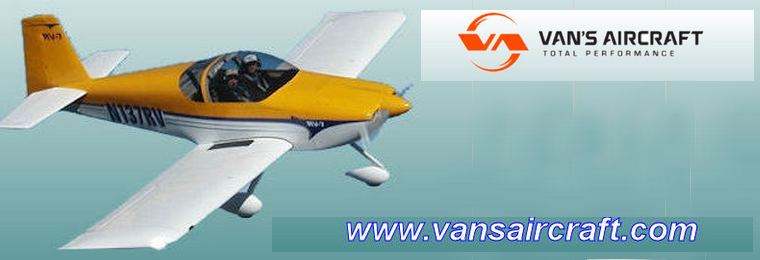

DAHER'S MARGRIT WALTZ'S HONOURED FOR COMPLETING 960TH FERRY FLIGHT
Daher recently honoured long-time ferry pilot Margrit Waltz for completing her 960th ferry flight, during which she completed a transatlantic trip to deliver a new-production TBM 960 turboprop single to an owner in North America.
As pilot-in-command, Ms. Waltz has now completed 960 trans-Atlantic and Pacific crossings in single- and multi-engine aircraft including pistons, turbines, and light jets. On her 50th birthday, she made the decision to no longer fly pistons; only turboprops and light jets. At this point, she was thinking of retiring after 900 crossings. Now 1000 is not totally out of the question!
Waltz has remained active in general aviation for 48 years. She became one of the first pilots to ferry a TBM across the Atlantic Ocean in 1991. She has since delivered more than 300 of the aircraft to North America and has flown others to Africa, Asia, and Australia, Daher said.
"It's highly symbolic that Margrit flew the milestone trip with a TBM 960, as her ferry flight services on behalf of Daher during the past three decades have contributed to the TBM program's success," said Nicolas Chabbert, the CEO of Daher's aircraft division. "With her professionalism and aviator skills, she sets a wonderful example for all women aspiring to a career in aviation."


GAMA STATEMENT ON FAA SMS FINAL RULE
General Aviation Manufacturers Association (GAMA) President and CEO, Pete Bunce, issued the following statement regarding the FAA issuing its final rule on Safety Management System (SMS):
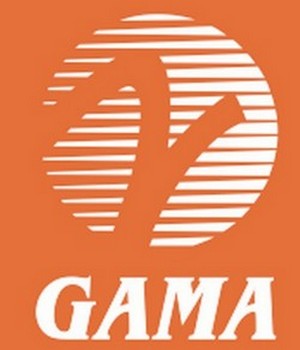
We appreciate the FAA Aircraft Certification Service for working with manufacturers on the voluntary SMS program and applaud the FAA for issuing this final rule to further strengthen our aviation safety systems through SMS implementation and oversight. We also recognize the U.S. Congress for its support of SMS and the important legislative contribution to the completion of this rulemaking."
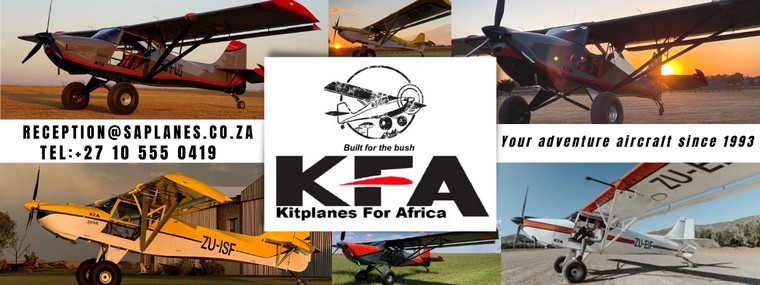
Completed in 15 hours and 38 minutes, the milestone flight involved a trip from Daher's TBM production facility in Tarbes, France, to the U.S. operations base for Daher's aircraft division in Pompano Beach, Florida, with stopovers in Wick, UK; Keflavik, Iceland; and Canada's Goose Bay.
"It was a great trip: good winds, good weather-and with the excellent performance of the TBM 960," Waltz said of the trip. A German-born pilot who lives in Lackawanna County in Pennsylvania, Waltz has remained active in general aviation for 48 years. She became one of the first pilots to ferry a TBM across the Atlantic Ocean in 1991 and has since transported more than 300 of them worldwide.
"It's highly symbolic that Margrit flew the milestone trip with a TBM 960, as her ferry flight services on behalf of Daher during the past three decades have contributed to the TBM program's success," said Nicolas Chabbert, the CEO of Daher's aircraft division. "With her professionalism and aviator skills, she sets a wonderful example for all women aspiring to a career in aviation."
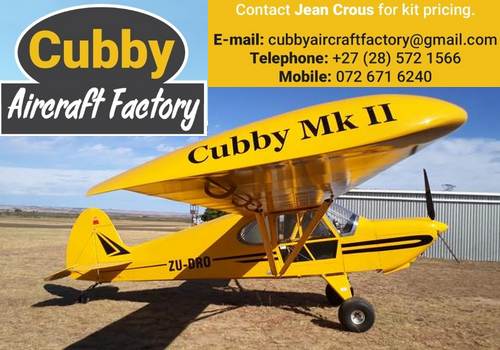

magniX, the company powering the electric aviation revolution, today announced that Harbour Air, North America's largest seaplane airline, has signed a Letter of Intent (LOI) to purchase 50 magni650 electric engines. magniX's electric propulsion units (EPUs) will be used to electrify Harbour Air's fleet, beginning with the De Havilland DHC-2 Beaver in 2026. The magni650s will also be used for third-party conversions.
The agreement is a milestone in electric aviation and a significant next step in the industry-leading partnership between magniX and Harbour Air. In December 2019, the two companies made history when the eBeaver, a Harbour Air De Havilland DHC-2 Beaver retrofitted with a magniX electric engine, became the world's first fully electric commercial aircraft to take flight. To date, the prototype eBeaver has flown 78 flights in preparation for the certification of the aircraft.
magniX is pioneering electric aviation, having powered historic flights by five different aircraft. Alongside the eBeaver, these include Eviation's all-electric commuter airplane, Alice, and the world's largest hydrogen-electric aircraft, Universal Hydrogen's retrofitted De Havilland Dash 8.
"Electrifying Harbour Air's fleet with magniX's engines sets us on a course to define the future of regional flight," said Riona Armesmith, Chief Technology Officer of magniX. "The many flights that the eBeaver has now completed with magniX's technology demonstrate that the electric age of aviation is here and bringing it to the marketplace is growing rapidly closer. As we mark Earth Day, we recognize the urgency of solutions such as this in answering the climate challenge."
"We are excited to accelerate the adoption of electric aviation technology and further our journey towards a sustainable future", says Bert van der Stege, CEO of Harbour Air. "The agreement with magniX underscores our commitment to revolutionize commercial aviation with electric propulsion and to pave the way for cleaner, quieter, and more efficient air travel."

CHAD OPERATING AKSUNGUR UAVS
www.defenceweb.co.za
It has emerged that Chad's military is now operating Aksungur unmanned aerial vehicles (UAVs), adding to the growing list of Turkish-supplied military equipment.
Video released on 21 April showed a single Aksungur in Chadian markings taking off from Adji Kossei Air Base at N'Djamena International Airport, and Chadian Air Force personnel being trained in Turkey by Turkish Aerospace Industries (TAI/TUSAS).

The aircraft is powered by two PD-170 twin-turbocharged diesel engines enabling long endurance operations up to 12 000 metres. An optional satellite communications payload can allow beyond line-of-sight operations. The Aksungur is 12.5 metres long, has a wingspan of 24.2 metres and endurance of 50 hours (without weapons).
A maritime patrol version of the UAV is available, and this is fitted with a synthetic aperture radar, Automatic Identification System (AIS), sonobuoy pod, and magnetic anomaly detector (MAD) boom. TAI is also working on fitting a lightweight torpedo to the Aksungur.
The Aksungur was developed from the combat-proven Anka UAV and has been in Turkish Navy service since October 2021.

Algeria was earlier reported as the first African export customer for the Aksungur, with Algerian media in October last year stating that the North African nation would acquire six of the aircraft, but this has not been officially confirmed.
Chad's receipt of Aksungur aircraft comes less than a year after it received three Hurkus-C trainer/light attack aircraft and two Anka UAVs from TAI. These were unveiled by President General Mahamat Idriss Déby Itno in July 2023. MAM-L and MAM-C munitions were also introduced into service. In January, Chad's Air Force awarded certificates to three pilots and seven technicians who completed qualifications on Hurkus aircraft.
In May 2023, TAI revealed that it had delivered two Hurkus aircraft to neighbouring Niger, which placed the first confirmed export order for the type.
The Hurkus is a tandem two-seat, low-wing, single-engine turboprop aircraft that was designed as a new-generation trainer as well as a platform for performing light-attack and armed reconnaissance combat missions. The Hurkus-A is the basic version that can be used by non-military customers while the Hurkus-B is a more advanced version with more sophisticated avionics.
The Hurkus-C is the armed variant that can be used for close air support. It is fitted with a forward-looking infrared (FLIR) sensor and can carry 1 500 kg of weaponry. It has been seen fitted with L-UMTAS anti-tank guided missiles, Cirit laser-guided rockets and external fuel tanks. It will also be able to carry bombs, 12.7 mm machineguns and 20 mm cannon pods.
The Anka-A first flew in 2010 and entered service with the Turkish military in 2014. The improved Anka-S entered service in 2017. It has a payload of 200 kg and can carry eight Cirit 70 mm rockets or four MAM-L guided missiles. The Anka-S can be fitted with a variety of payloads including Aselsan SARPER radar, Star Safire 380-HDL forward-looking infrared and satellite communications link. Endurance is 24 hours, with a maximum altitude of 9 000 metres. The aircraft is powered by a diesel engine driving a three-blade propeller, giving a cruising speed of around 200 km/h.
Chad has received a variety of military hardware from Turkey in recent years. According to the Stockholm International Peace Research Institute's Arms Transfers database, the African nation received 20 Ejder Yalcin armoured personnel carriers (APCs) from Turkey in 2018 and 30 Nurol Makina NMS armoured vehicles in 2021.
Other recent deliveries include several Bastion APCs from France in 2019; 20 Ara-2 APCs from Nigeria that same year; 18 MCAV-20 and 60 Terrier LT-79 vehicles from the UAE between 2021 and 2023; and 28 David armoured vehicles from the United States in 2020.


Robinson Helicopter Company (RHC), a global leader in civilian rotorcraft, has acquired Ascent AeroSystems, now a wholly-owned subsidiary of the Robinson Helicopter Company. This acquisition reinforces Robinson's dedication to scaling innovation, accelerating new rotorcraft developments, and supporting diverse missions worldwide. By leveraging the expertise and resources of both companies, Robinson reinforces its leadership in the future of vertical flight systems and utility missions.
Ascent AeroSystems' expertise in autonomous electric flight technology and modular design philosophy will enhance Robinson's offerings. The integration of emerging technologies and a diverse ecosystem of payloads, power sources, and launch methods will further enhance the company's mission-focused offerings, including crewed-uncrewed teaming and interoperability across product families.
"This strategic acquisition is in line with our vision to broaden our offerings and meet increasing global demand for enhanced mission capabilities in law enforcement, public safety, firefighting, utility, and defence," said David Smith, president and CEO of Robinson Helicopter Company. "Ascent's advanced technologies and versatile designs complement our ability to be the preeminent choice in global rotorcraft."
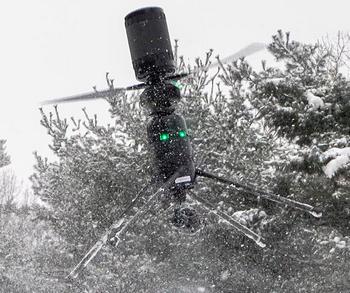
"Drones based on consumer-grade electronics will never be able to provide the safety and dispatch reliability needed to support operations at scale," said Peter Fuchs, Ascent AeroSystems' CEO. "They will ultimately require a type certificate for the aircraft, a production certificate for the factory, an operating certificate for the network, and a maintenance certificate for the repair station. That is the standard that has provided the foundation for civil aviation for the last eight decades. It's a rigorous process, and there are no shortcuts. The laws of physics and aerodynamics Favor coaxial, and with Robinson's fifty years of experience, there is now no better domestic source for reliable, mission-critical UAV platforms."
UAS are increasingly integrated into traditional rotorcraft operations in sectors including defence, public safety, agriculture, energy, utilities, construction, logistics, shipping, and surveying. Ascent AeroSystems will maintain its headquarters near Boston.
Ascent AeroSystems' compact, all-weather, high-performance, uncrewed aerial systems are designed and built in the USA. Based on patented coaxial technology, they offer unmatched versatility and are the ideal platforms for mission-critical operations and system integrators in public safety, industrial, government, and enterprise applications.


VOLTAERO INITIATES CERTIFICATION TESTING FOR THE ELECTRIC-HYBRID POWERTRAIN TO EQUIP ITS CASSIO 330 AIRCRAFT
In a major new milestone for VoltAero's development of its Cassio e-aircraft family, the company's parallel electric-hybrid powertrain has begun certification testing for the five-seat Cassio 330 version.
Installed on a ground-based test bench, this powertrain integrates the key elements for series production Cassio 330s: Safran Electrical & Power's ENGINeUS™ 100 smart electric motor; and Kawasaki's four-cylinder high-performance thermal engine derived from the iconic Ninja® motorcycle.
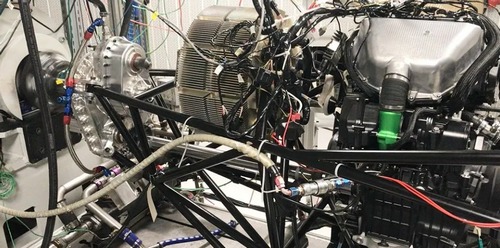
The ground-based test bench runs of Cassio 330's powertrain are underway at the Bayonne, France facility of AKIRA Technologies.
Botti added that VoltAero's overall architecture for the Cassio 330 powertrain already has been validated during extensive flight testing with the company's Cassio S testbed airplane, which is equipped with a powertrain version rated at 600 kilowatts - the most powerful electric-hybrid system of its type that is flying today. Cassio S has performed more than 230 flights since October 2020, surpassing the combined 170-flight-hour mark while covering 15,000 kilometers and visiting 40-plus airports.
The VoltAero parallel electric-hybrid propulsion concept for Cassio is unique, with the aircraft using the electric motor in its aft fuselage-mounted propulsion unit for all-electric power during taxi, takeoff, primary flight (if the distance traveled is less than 150 km.), and landing. The hybrid feature - with the internal combustion engine integrated in the powertrain - comes into play as a range extender, recharging the batteries while in flight. Additionally, this hybrid element serves as a backup in the event of a problem with the electric propulsion, ensuring true fail-safe functionality.
By integrating VoltAero's parallel electric-hybrid propulsion system into the company's purpose-designed airframe, Cassio will deliver an order of magnitude higher performance as compared to the current competition, and provide significantly lower operational costs. The Cassio airframe design is based on a sleek fuselage, a forward fixed canard, and an aft-set wing with twin booms that support a high-set horizontal tail.
VoltAero's first production aircraft version will be the Cassio 330, for which the company has targeted certification in late 2025. It will be followed by the six-seat Cassio 480 with a combined electric-hybrid propulsion power of 480 kilowatts, and the Cassio 600 - sized at a 10/12-seat capacity with electric-hybrid propulsion power of 600 kilowatts.


Archer Aviation Inc., a leader in the development of electric vertical takeoff and landing (eVTOL) aircraft, announced the signing of a framework agreement in Abu Dhabi today at the DRIFTx mobility event, held at the Yas Marina Circuit showcasing the latest in advanced urban mobility, driving discussions, collaboration, and innovation across the sector.
This agreement covers multi-hundred-million-dollar investments to accelerate Archer's planned commercial air taxi operations in the UAE, slated to launch as soon as next year, including in-country manufacturing, operations and training across the region. This comprehensive agreement positions Abu Dhabi as one of the world's leaders in promoting urban air mobility, with plans to commence air taxi operations with Archer's Midnight aircraft as soon as next year.
Key components of Archer's collaboration with ADIO include vertiport construction, operational enablement for air taxi operations in the UAE, and in-country manufacturing of Archer's Midnight aircraft. Under the agreement, ADIO will also ensure local workforce development programmes for Emirati talent and facilitate the establishment of Archer's international headquarters and Centre of Excellence in Abu Dhabi.
"This substantial agreement with Abu Dhabi is a pivotal moment for Archer's commercialisation efforts across the Emirates, as it provides the catalyst to accelerate the launch of our electric air taxi service in the UAE as soon as late 2025. The agreement underscores Abu Dhabi's strong commitment to Archer and conviction to become a global hub for urban air mobility. With Abu Dhabi's support, we are poised to continue leading the transformation of urban transportation in the Emirate and across the globe," said Archer founder and CEO, Adam Goldstein.
"Abu Dhabi is leading the way in accelerating the launch of electric air taxis globally, and ADIO is proud to partner with Archer as one of the world's most innovative companies. We are excited to support Archer toward establishing its international headquarters in Abu Dhabi, and to develop a comprehensive investment framework that will accelerate its progress towards manufacturing and operating its Midnight aircraft in the UAE," said Badr Al-Olama, Director General of ADIO.
Under this agreement, ADIO will support the development of vertiports, in collaboration with Archer and other air taxi operators, in critical locations throughout Abu Dhabi, enhancing the urban air mobility infrastructure necessary for Archer to scale operations.
ADIO and Archer first announced their memorandum of understanding at the 2023 launch of ADIO's Smart and Autonomous Vehicles Industry (SAVI) cluster, which aims to transform the future of urban mobility globally by supporting the innovation and commercialisation of smart and autonomous vehicles across land, sea, and air. The framework agreement announced at DRIFTx with Archer represents the culmination of six months of close collaboration between the two entities.
Importantly, ADIO and Archer will continue to work with Archer's partners to accelerate the company's progress in the region. With the support of its early investor and UAE's sovereign wealth fund Mubadala, Archer's partner operators Falcon Aviation and Air Chateau, and GAL-AMMROC have announced plans to provide maintenance, repair and overhaul support for Archer's eVTOL aircraft.
Archer's goal is to transform urban travel, replacing 60- to 90-minute commutes by car with estimated 10- to 20-minute electric air taxi flights that are safe, sustainable, low noise, and cost-competitive with ground transportation. Archer's Midnight is a piloted, four-passenger aircraft designed to perform rapid back-to-back flights with minimal charge time between flights.
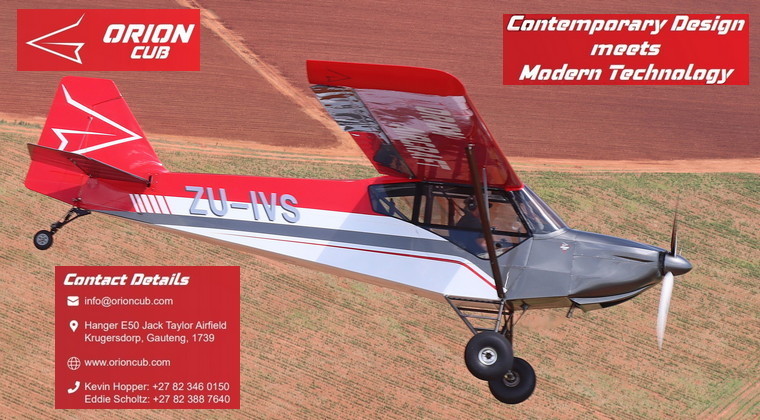
"The creation of GDHF and this follow-on GDAT contract underlines the versatility and competitiveness of the H175 and the H160. We look forward to a long-standing partnership with GDHF as they put these multi-mission helicopters into service with their customers around the globe," said Bruno Even, CEO of Airbus Helicopters.
In service since 2015, Airbus' H175 belongs to the super-medium class of helicopters, combining long-range and payload with smooth flight qualities, making it the optimal solution for a wide range of onshore and offshore mission profiles, including disaster relief, search & rescue and other public services, as well as crew change and private and business aviation. The 55 H175s currently in service have accumulated more than 210,000 flight hours, of which 184,000 in the energy sector.



28 APRIL 1937
The first transpacific flight by a commercial passenger airliner is completed when Pan American Airways' Martin M-130, China Clipper, arrived at Hong Kong.

A large crowd welcomed the clipper at Kaitak Airport. Included were Acting Governor N. L. Smith and representatives of all of the colony's government and commercial activities. The clippers' pilot, A. E. Laporte, and crew were escorted to a dais at the hangar, where the acting governor gave a speech of welcome.
The plane, on its return flight on Thursday, is expected to carry 2500 pounds of cargo, including 40,000 letters.


Bolivia, Arenal, Bolivar: An Ejército Nacional de Colombia (Colombian Army) Mil Mi-17V-5, operated by Batallón de Movilidad y Maniobra de Aviación No.3, crashed under unknown circumstances in a forest in Arenal, Bolivar. The nine occupants died and the helicopter was destroyed.
USA, El Cajon, CA: The aircraft force landed in a residential area near San Diego-Gillespie Field, CA (SEE), sustaining substantial damage. The airplane was immediately returning to the airfield after making a 180-degree turn near Cuyamaca Lake, 14 minutes after take-off. The aircraft then suffered an engine failure shortly before crashing.
Ecuador, Warientza airstrip (SEWR): The Cessna 206 was flying from Macas to Warientza with pilot Juan Dávila and 3 occupants. During landing, the plane hit a donkey that entered the airstrip, and the animal died. The aircraft then skidded off the runway and ended up in the mud; the occupants were unharmed.
USA, Raleigh-Durham International Airport (RDU/KRDU), NC: A SOCATA TBM700N (TBM850) crashed during an attempted landing on runway 32 at Raleigh-Durham International Airport (RDU/KRDU), Raleigh-Durham, North Carolina. The pilot and doctor received unspecified, but apparent moderate injuries and the aircraft was written off. The NTSB reported that, based on preliminary eyewitness accounts, the aircraft crashed during a missed approach attempt.
USA, near Fairbanks International Airport (FAI), AK: A Douglas C-54D-DC Skymaster, operated by Alaska Air Fuel, was destroyed when it crashed shortly after takeoff from Fairbanks International Airport, AK (FAI). Both pilots perished.
The aircraft was loaded with 3,200 gallons (12,100 litres) of heating oil for Kobuk, a village located about 300 miles (480 kilometres) northwest of Fairbanks. A few minutes after take-off the flight radioed that they had a fire. A video of the accident sequence appears to show an engine had malfunctioned. The aircraft hit a steep hill and slid down an embankment to the bank of the Tanana River, bursting into flames. ADS-B data shows that the airplane was climbing to about 1500 feet before it began a descending left turn towards the river. An online video shows that one of the engines on the left side exploded, followed by the airplane entering a steep left bank less than 10 seconds later. The two occupants perished.

Compair A2A Shoot

Google Banner Ad
 |
 |
 Copyright © 2024 Pilot's Post PTY Ltd
The information, views and opinions by the authors contributing to Pilot’s Post are not necessarily those of the editor or other writers at Pilot’s Post.
Copyright © 2024 Pilot's Post PTY Ltd
The information, views and opinions by the authors contributing to Pilot’s Post are not necessarily those of the editor or other writers at Pilot’s Post.